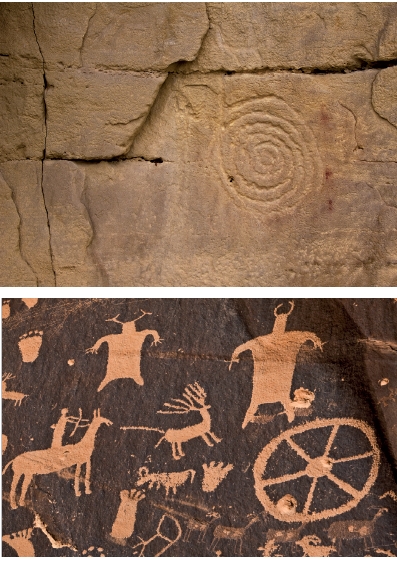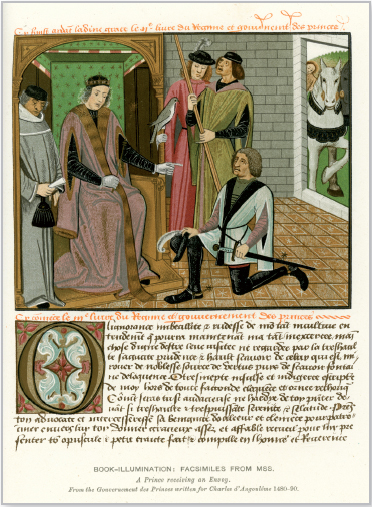MM1-c Composing hasn’t changed
In some ways, composing has not changed all that much. It has always been crucial to how meaning is made and shared—how we communicate ideas from person to person, community to community, and generation to generation. Composing has always served to capture, save, and deliver ideas, messages, and meanings. Ancient cultures, for example, composed petroglyphs, rock carvings on cave walls and the sides of mountains, to share their ideas in a lasting way (Figure 1-2).
Further, composing has often, to some extent, been multimodal. As far back as the fifth century CE, for example, monks created illuminated manuscripts—richly decorated books that combined illustrations and words (Figure 1-3).
Though today’s printed brochures aren’t handwritten or decorated with gold leaf, they are a similarly effective combination of modes (words and images). Think about a catalog that includes full-color, glossy pages and perhaps a QR (Quick Response) Code® you can scan for more information (Figure 1-4). Or think about an e-book, which might include the typical contents of a printed book—a table of contents, numbered pages, lots of text, and so on—but which can also contain embedded video clips and animations.


